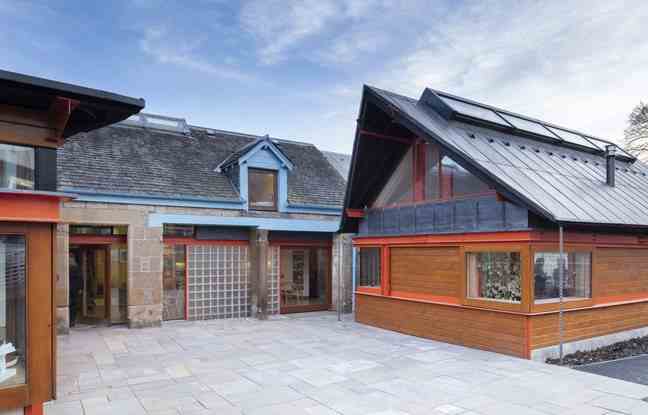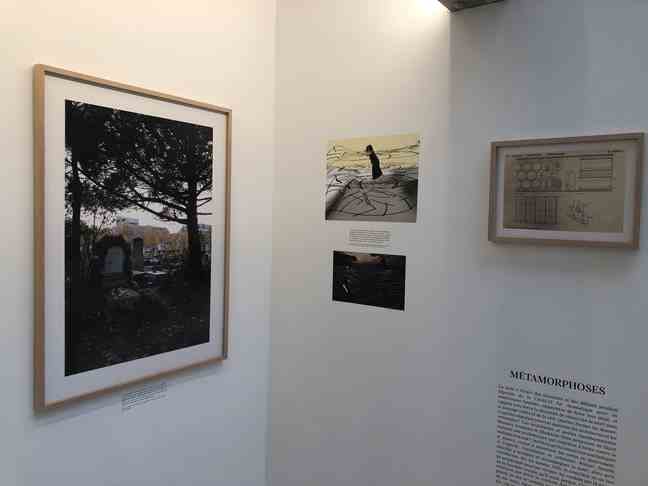How to make the city more accessible to the handicapped, the dwellings more adapted to old age, the hospital less sad, the places of care more green and open? After two years of health crisis, which questioned our relationship to illness and to the city, the exhibition “Support: city, architecture and care”*, produced by the philosopher and psychoanalyst Cynthia Fleury and the collective of architects Scau, encourages rethinking architecture by taking care into account. “We started thinking two years ago, we were all confined, recounts Alexandre Labasse, director of the Arsenal Pavilion. And we wondered how is it that in the 21st century, as in antiquity, we have the same attitude in the face of a pandemic: exodus? Does the city make you sick? »
This wandering between photos, works of art, models of hospitals and videos of innovative initiatives gives hope: some philosophers, architects, doctors and researchers question themselves and offer some leads. “It is in the direction of ‘care’ that you have to work while confronting the practice”, summarizes Mathieu Cabannes, architect of theSCAU agency. Between the vaccinodromes in the car parks, the medical deserts, the recent nursing home scandal, the news reminds us how urgent it is to imagine a city of tomorrow with care as its backbone. 20 minutes has selected five initiatives or illustrations from this exhibition and the accompanying book to reflect on.
The place of nature in an “asylum”
Plans and a video of the “ House of Charenton show how, from 1850, this asylum seemed exemplary. In the 19th century, it was considered that the city facilitated the development of mental pathologies. This is then one of the justifications for keeping these “insane” away from Paris. For this “Maison de Charenton”, Doctor Esquirol and architect Emile Jacques Gilbert imagine a space where nature, seen as therapeutic, has its place. We take advantage of the slope to build three spaces of different heights and promote viewpoints, we plant trees in each courtyard…
The Maggie’s Centers or the “placebo architecture”

Why not offer patients and their loved ones a colorful, spacious, accessible environment, a stimulating library, a gardening workshop? It is the bet of Maggie’s Centers imagined by the American architect Charles Jencks for his wife, Maggie, suffering from cancer. There are about twenty of these open places, designed by renowned architects, for patients, their relatives and their companions, not medicalized but near a hospital, especially in Great Britain. So that the place of care becomes a place of life. In France, the Pavillon de l’Orbe in the Charles-Foix geriatric hospitalin Ivry-sur-Seine, is another example of these “new architectures” of care.
“The caring dimension of the city intervenes from the first cities. Moreover, Hippocrates wrote the first treatise on town planning! », reveals Eric de Thoisy, research director of the collective of architects Scau. “Before the 18th century, the hospital was a place where one died, and only afterwards where one healed, underlines Cynthia Fleury. More recently, we take into account the atmosphere, pathoplasty, that is to say the way in which the environment manufactures suffering. »

An Alzheimer village in Dax
The scandals of Ehpads and the suffering of caregivers alert to the urgency of rethinking habitats so that they are comfortable even when it is difficult to walk or climb stairs. Le Corbusier had imagined a house for his parents, built around a viewpoint. But not everyone has a recognized and wealthy architect as a son… “The question of the aging of the population leads us to question ourselves on how to recreate intimacy within the institution”, assures Eric de Thoisy. Before showing pictures of the first Alzheimer village in Dax, “where the architects chose to reproduce the decor of the bastide, which the patients experienced in their young years”. The project aims to offer a place to live for patients without white coats, with a “benevolent architecture” and “respecting tastes and rhythms of life”.

Agnès Varda and the Montparnasse cemetery
“The way society takes care of its dead says a lot about care, analyzes Eric de Thoisy. Today, we see the same invisibilization of illness and death. Until the 18th century, the cemetery of the Innocents [dans les quatier des Halles] was a place of life where the market was held, the morgue on the Ile de la Cité was very busy. At the end of the 18th century, intramural burials were prohibited, so the dead were taken out of Paris. »
But since then, some architects, landscape designers or artists have decided to reinvest these cemeteries. We thus discover in the exhibition a photo of Agnès Varda who had a pine tree planted and a bench installed near the tomb of her husband, Jacques Demy.

Two old cemeteries, in Neuilly and Puteaux, have been partly redeveloped to make them local green spaces integrated into the city. “Cemeteries can be islands of freshness,” says Cynthia Fleury. Moreover, our relationship to death is very cultural: in Japan, in the parks, there are rows of stone dolls [Jizo] which represent dead children. »
The Port of Beirut Explosion
When architecture leads the investigation… The exhibition shows a new aspect of what this discipline can be via the initiative of a British collective, Forensic Architecture. They are working on the explosion of August 4, 2020 in the port of Beirut, which caused the death of 200 people… and which remains quite mysterious. The collective creates a 3D chronology to reconstruct the events of this dramatic day. “In the trace of the building, there is that of the trauma, explains Cynthia Fleury. Using architecture to bring about truth and restorative justice is caring. »
* Exhibition “Supporting the city, architecture and care”, until August 28, 2022 at the Pavillon de l’Arsenal, 21 bd Morland, 4th arrondissement of Paris.

